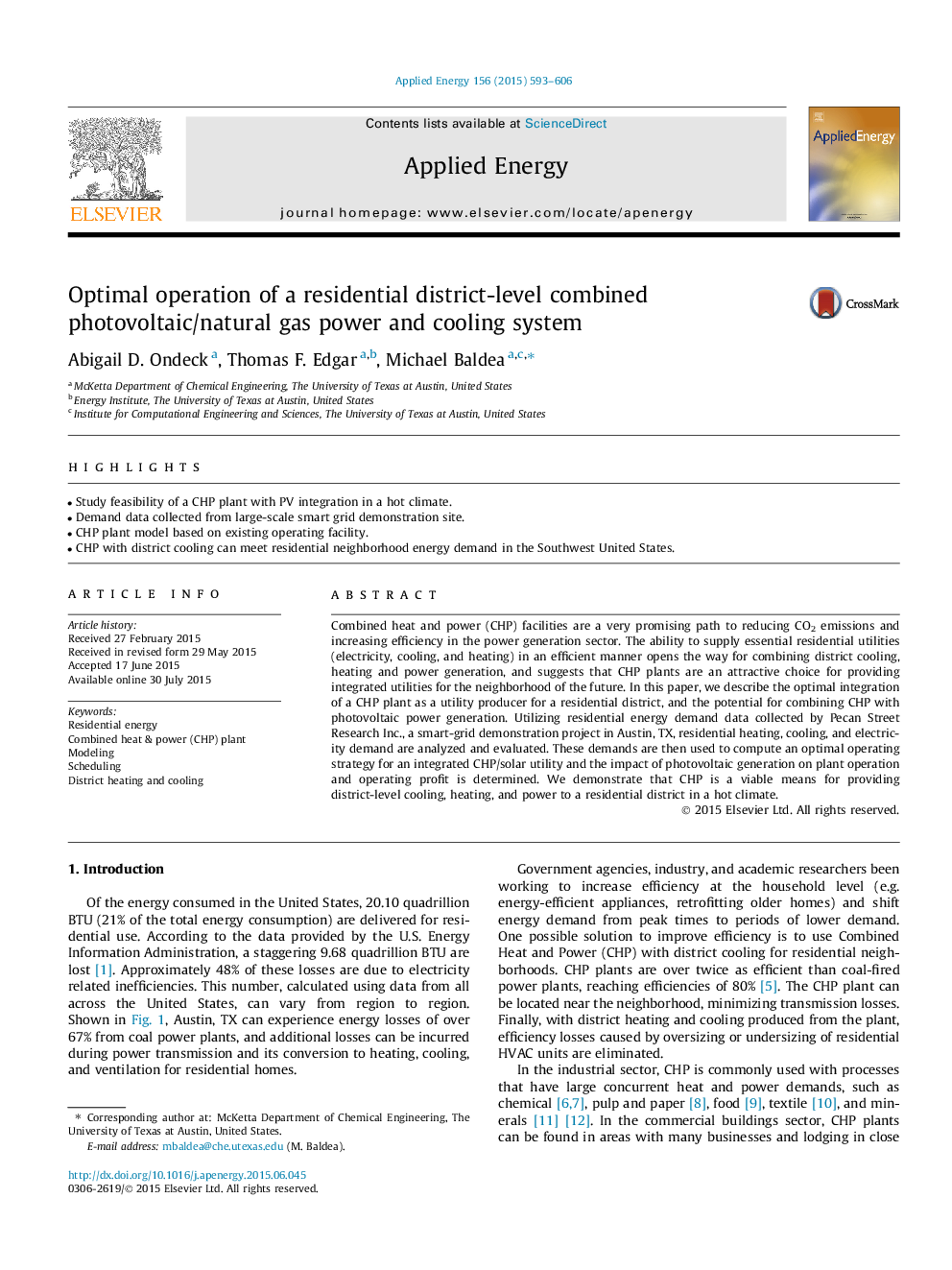| Article ID | Journal | Published Year | Pages | File Type |
|---|---|---|---|---|
| 6686320 | Applied Energy | 2015 | 14 Pages |
Abstract
Combined heat and power (CHP) facilities are a very promising path to reducing CO2 emissions and increasing efficiency in the power generation sector. The ability to supply essential residential utilities (electricity, cooling, and heating) in an efficient manner opens the way for combining district cooling, heating and power generation, and suggests that CHP plants are an attractive choice for providing integrated utilities for the neighborhood of the future. In this paper, we describe the optimal integration of a CHP plant as a utility producer for a residential district, and the potential for combining CHP with photovoltaic power generation. Utilizing residential energy demand data collected by Pecan Street Research Inc., a smart-grid demonstration project in Austin, TX, residential heating, cooling, and electricity demand are analyzed and evaluated. These demands are then used to compute an optimal operating strategy for an integrated CHP/solar utility and the impact of photovoltaic generation on plant operation and operating profit is determined. We demonstrate that CHP is a viable means for providing district-level cooling, heating, and power to a residential district in a hot climate.
Related Topics
Physical Sciences and Engineering
Energy
Energy Engineering and Power Technology
Authors
Abigail D. Ondeck, Thomas F. Edgar, Michael Baldea,
